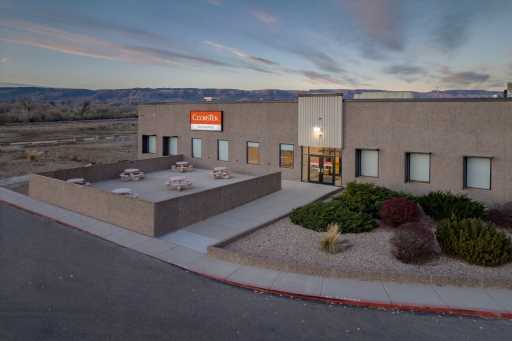
Buoyed by favorable decisions in legal wrangling with a competitor, CoorsTek Bioceramics is expanding its Grand Junction manufacturing hub and is increasing production of its devices used in hip replacements.
The company, a subsidiary of Golden-based CoorsTek, prevailed in a 2017 lawsuit over a trademark dispute involving the German company CeramTec and has seen U.S. and European courts and agencies decide in its favor. The latest decision was in December by the U.S. Patent and Trademark Office’s Trademark Trial and Appeal Board.
“As a company and competitor, we respect patents and we respect the ability of people to have first use on products. But at some point, that runs its course,” said Jonathan Coors, CEO of CoorsTek.
CeramTec didn’t respond to requests for comment.
Although there’s still active litigation “going in multiple ways” between the two companies, Coors said CeramTec’s bids to maintain its trademark are being rejected across multiple jurisdictions.
“We have active contracts with many customers and as the courts and the trademark offices continue to side with us, it just gives more confidence to our customers to continue to invest with us,” Coors said. “We’re seeing exponential growth coming on line.”
The dispute is about the color of CeramTec’s ceramic components for implants used in hip replacements. CeramTec, the marketplace leader, has defended the pink-colored devices as a trademark.
CoorsTek, whose hip implants are also pink, says the color is the natural byproduct of the chromium oxide used to harden the ceramic parts.
“You need that toughening, hardening agent inside the ceramic material in order for it to perform at the level that it needs to inside the body,” Coors said.
In 2005, CoorsTek started developing a ceramic femoral head and a polyethylene liner to replace damaged hip joints. The company began producing the parts in 2011 and received approval from regulators in Europe in 2012 and the U.S. Food and Drug Administration in 2016.
Coors declined to quantify the increases that CoorsTek, a privately owned company, is experiencing in business. However, he said the expansion of the Grand Junction factory will support the growth and that CoorsTek is poised to be “a sizable alternative supplier in the marketplace.”
The company broke ground last fall on expansion of the Grand Junction facility and expects it to be completed later this year. CoorsTek is hiring to increase the workforce of approximately 200.
More than 2 million hip replacements are done globally each year, Coors said. A large share of those occur in the U.S. and use ceramic parts. And a big share of the parts come from CeramTec.
“From a ceramics perspective, they’re a really good competitor and they make a really good product,” Coors said of CeramTec.
However, CoorsTek believes the market will benefit from more competition, which could spur innovation. In addition, Coors said the COVID-19 pandemic has shown that expanding domestic manufacturing can help avoid the problems that businesses and consumers have faced because of delays and shortages caused by global supply-chain disruptions.
The market for hip implant products is growing by about 5% a year, Coors said. “As populations continue to age and people live longer, hip arthroplasties become more important.
“From a business perspective, it’s a great opportunity and a market that we want to play more in and have a bigger share in,” he added.
CoorsTek, in business for more than a century, aims to make products that make the world better, Coors said. “Our participation in this space is helping people walk again, maybe run a marathon they thought they could never do.”
CoorsTek, owned by the family that started what became Coors Brewing Co. in Golden, has about 6,000 employees worldwide. The industries it supplies include aerospace, defense, automotive, energy, electronics, agriculture and the medical field.
Coors said the medical field began using ceramic parts in more hip replacements in the past 15 to 20 years. He said people’s bodies don’t react to or try to fight the material in the way it does with more traditional metal components.
“You’re seeing a much higher efficacy in patients and what we call the survivorship, which means how well your body takes the unit,” Coors said. “People are able to get up and running and moving again quicker.”
The company gets its raw materials for the parts from around the world and has had few problems with supplies during the pandemic, Coors said. Even before the pandemic, the company was aggressive about keeping the materials flowing, he said.
“We process them in-house. It’s formed, fired and finished all in Grand Junction.”
Get more business news by signing up for our Economy Now newsletter.
Source: Read Full Article
